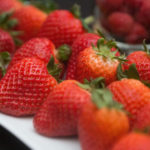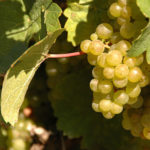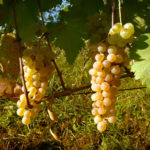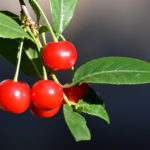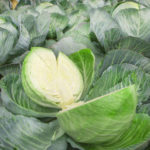Cherry variety Regina
We are all accustomed to the fact that cherries open the fruit season. But it is moving away very quickly. To lengthen the consumption of the sweet berry, breeders have created varieties that bear fruit at a later time. For example, Regina. It was bred by German specialists and comes into fruiting at a later date. The main characteristics of the novelty were transferred from the late Schneider species, the second parental form was Roubet.
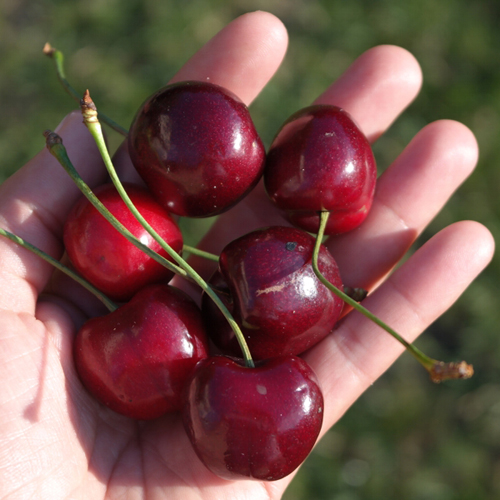
Description
The tree is not tall - 3-4 meters, so it is perfect for a small garden. Straight, fast-growing shoots form a pyramidal crown of medium thickening. The main branches extend from the trunk almost at right angles, the conductor is pronounced. The leaves are elliptical, with a pointed tip, green. The surface is smooth, slightly glossy, with feathery venation. Serrated edges. The petiole is long, there are glands at the base of the plate. The structure of the flower is usual, the petals are white.
Regina's berry is large - 9-10 grams, 3.2 cm in diameter. The shape is heart-shaped, slightly elongated. The skin is shiny, smooth, dark red in color. The pulp is also colored red. Medium bone. The separation of the berry from the stalk is dry. Cherry has a rich, sweet taste with a slight sourness. The tasting score is high - 4.8 - 5 points. In terms of consistency, the pulp is elastic and gristly, which puts it in the bigarro group.
Characteristics
- The variety has a good maturity, fruits appear already 3-4 years after planting;
- ripening period is late when compared with other varieties. The fruits ripen in the second or third decade of July;
- ripe berries do not crumble, which is very convenient for gardeners who can visit their sites only on weekends. Harvest them will definitely wait on the tree, and not under it;
- also Regina berries are resistant to cracking, even in very damp weather;

- fruiting occurs annually, without interruption. 40 kilograms of the crop are removed from one tree;
- frost resistance is above average. The plant can withstand frosts at -25 ° C without loss;
- immunity is excellent. Sweet cherry is resistant to pathogens of fungal diseases and pests;
- berries tolerate long-term transportation, have good shelf life. This is a big plus when compared to early varieties;
- the way of eating berries is universal. The fruits are tasty and healthy fresh, suitable for canning.
Pollinators
Regina is self-fertile, but it is difficult to pick up pollinators due to late flowering. Best of all, they will cope with the task - Late Schneider, Bianca, Karina, Sylvia. Cherries are also suitable - Nephris, Coral, Lotivka.
Features of planting and care
Many gardeners advise purchasing seedlings on a dwarf rootstock. This speeds up the process of entry of cherries into the fruiting period. If you take Antipka as a rootstock, then fruiting will come later, and the yield will be lower than usual. Good compatibility with Gisella-5 rootstock. Our heroine reproduces mainly by grafting. Sowing with a bone is less reliable; grown trees will not show the properties of a parent.
In the spring, during a period of rapid growth, and then in the process of pouring berries, abundant watering is needed. Preventive spraying should be carried out against the cherry fly, which can destroy up to half of the entire crop.
Good yield, excellent appearance of fruits and their taste, transportability and keeping quality - all this makes Regina a very promising variety not only for private gardens, but also for commercial cultivation. The only drawback of this cherry can be called self-fertility.

